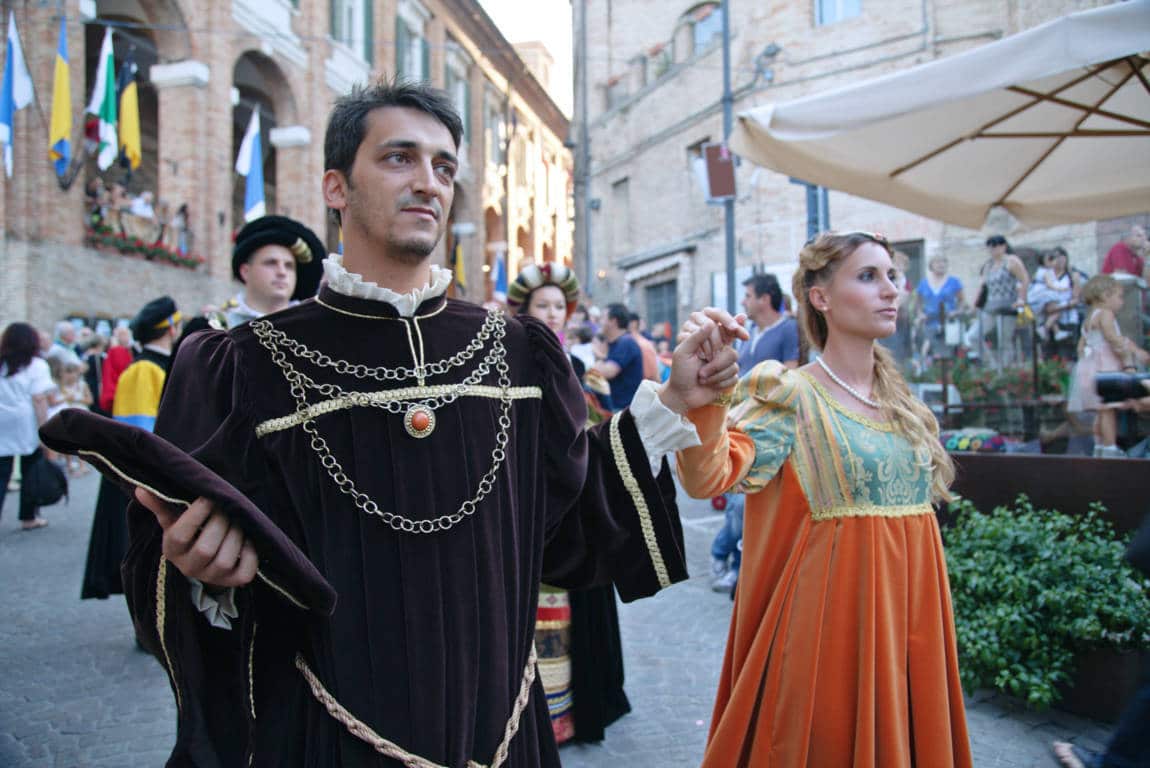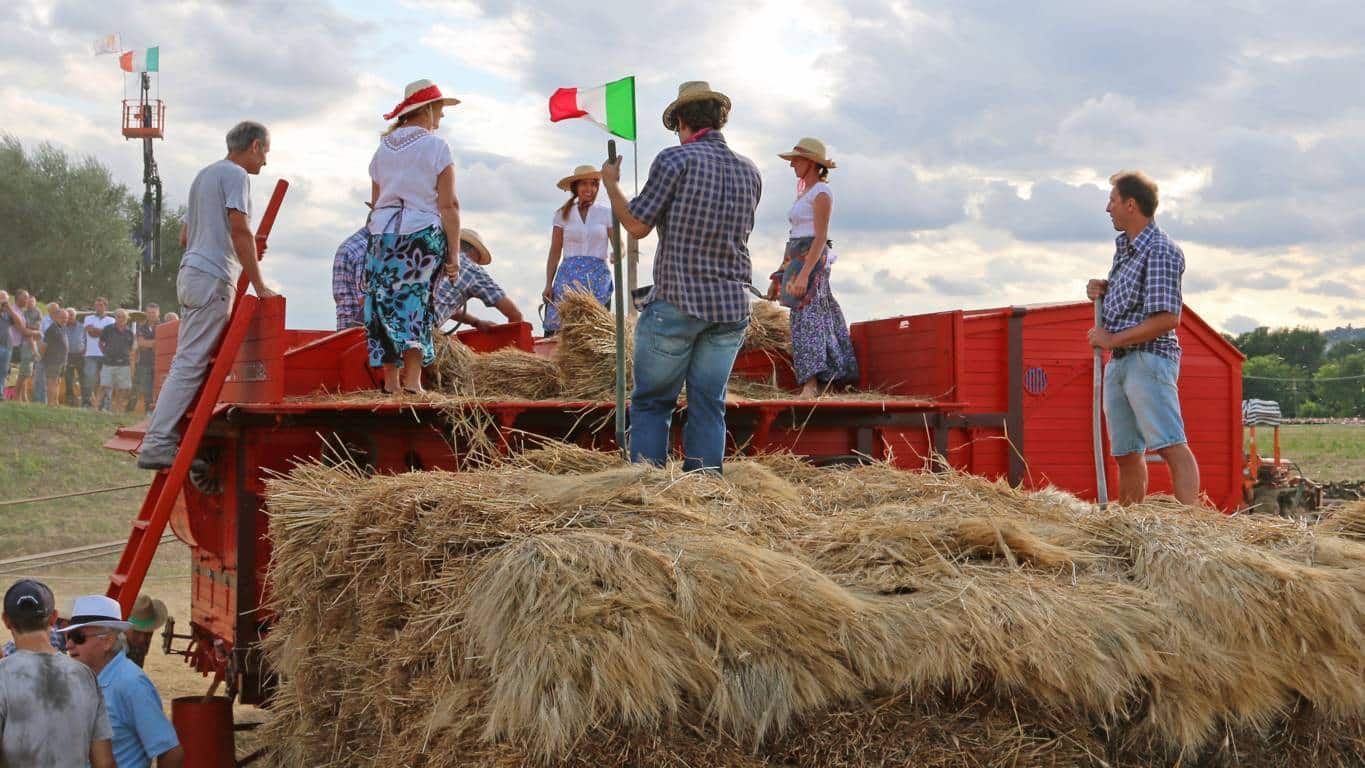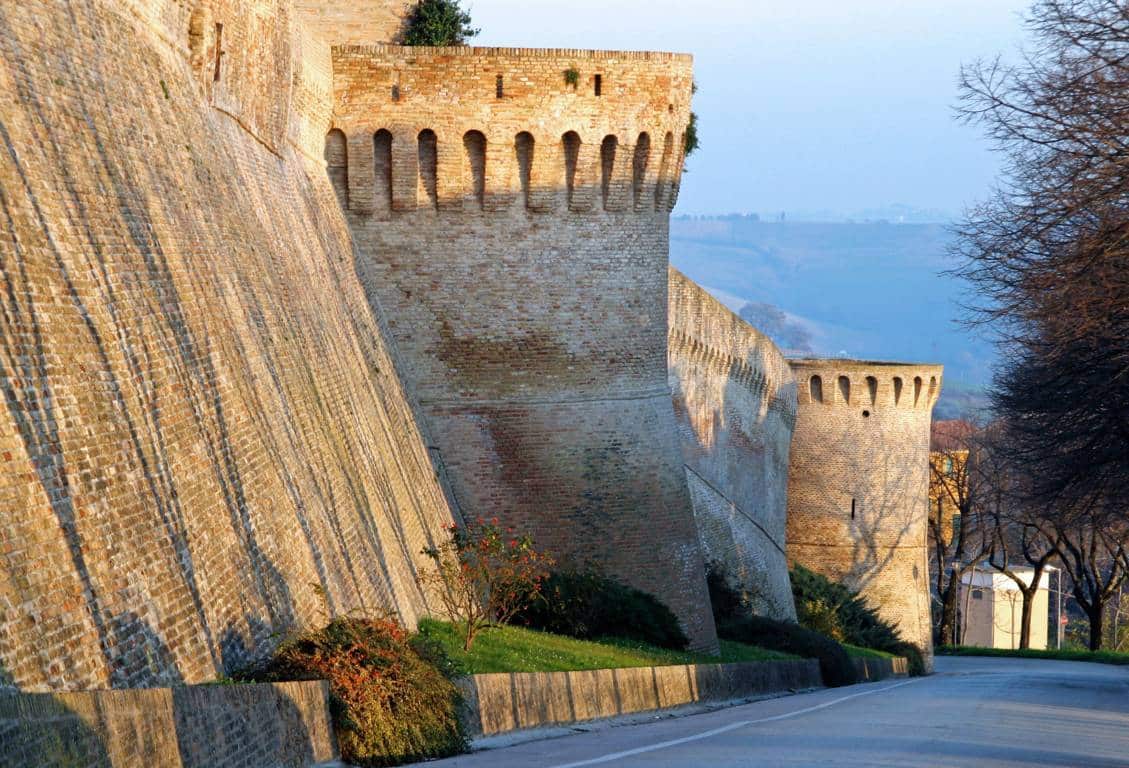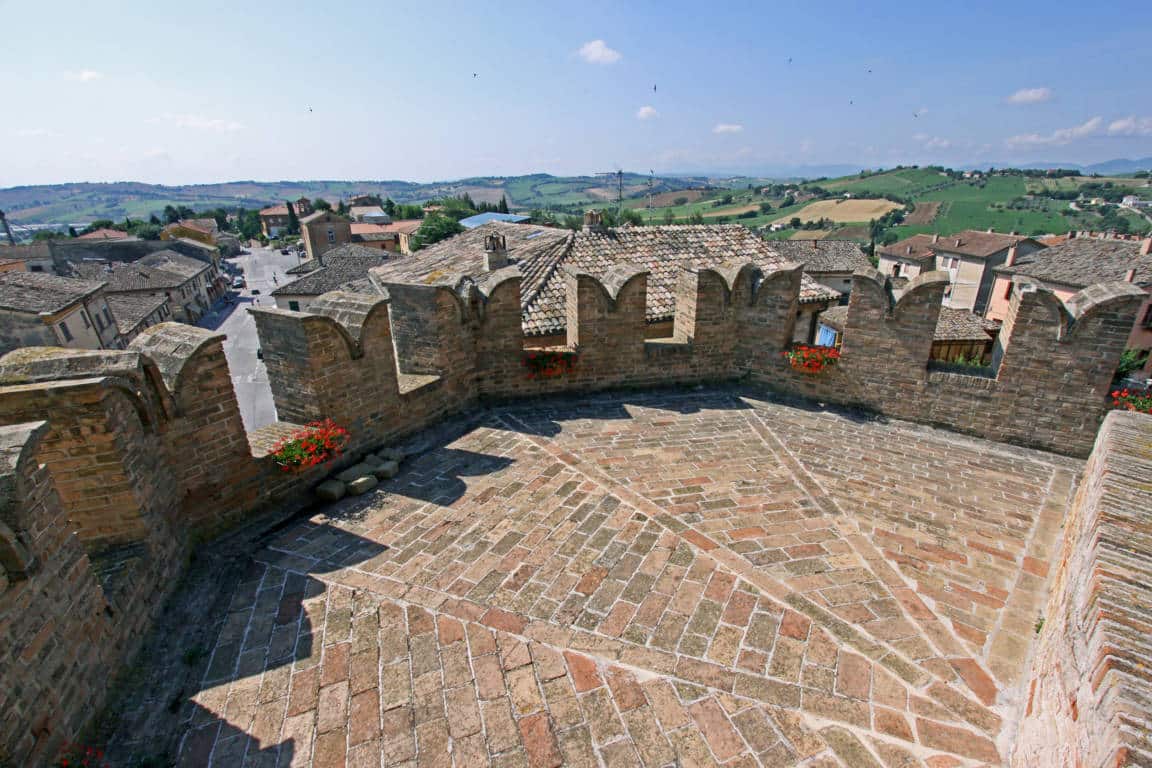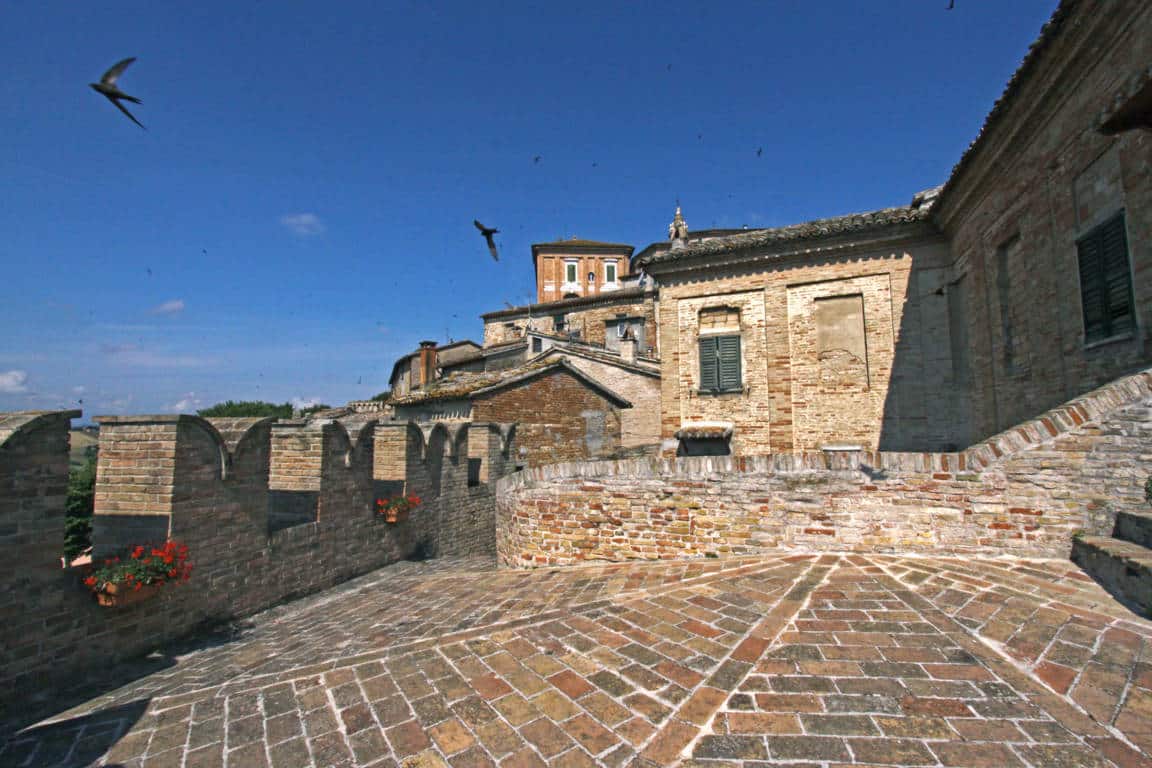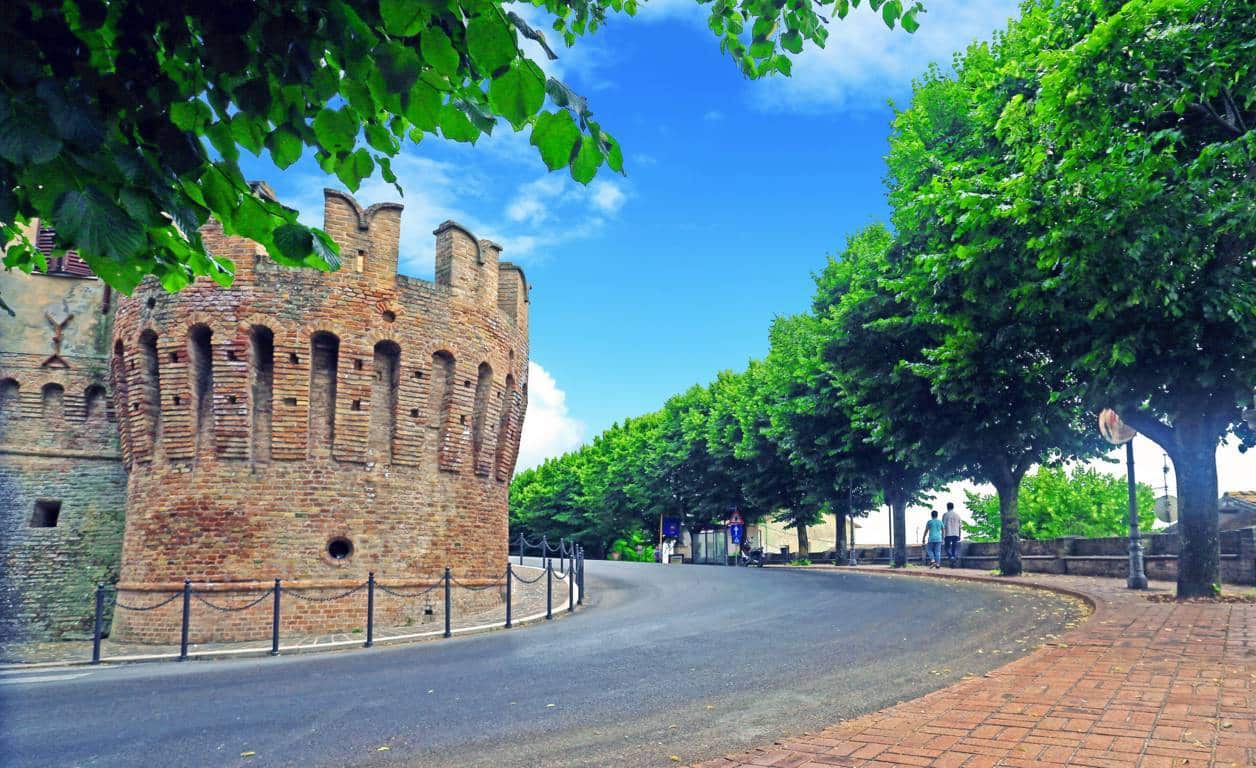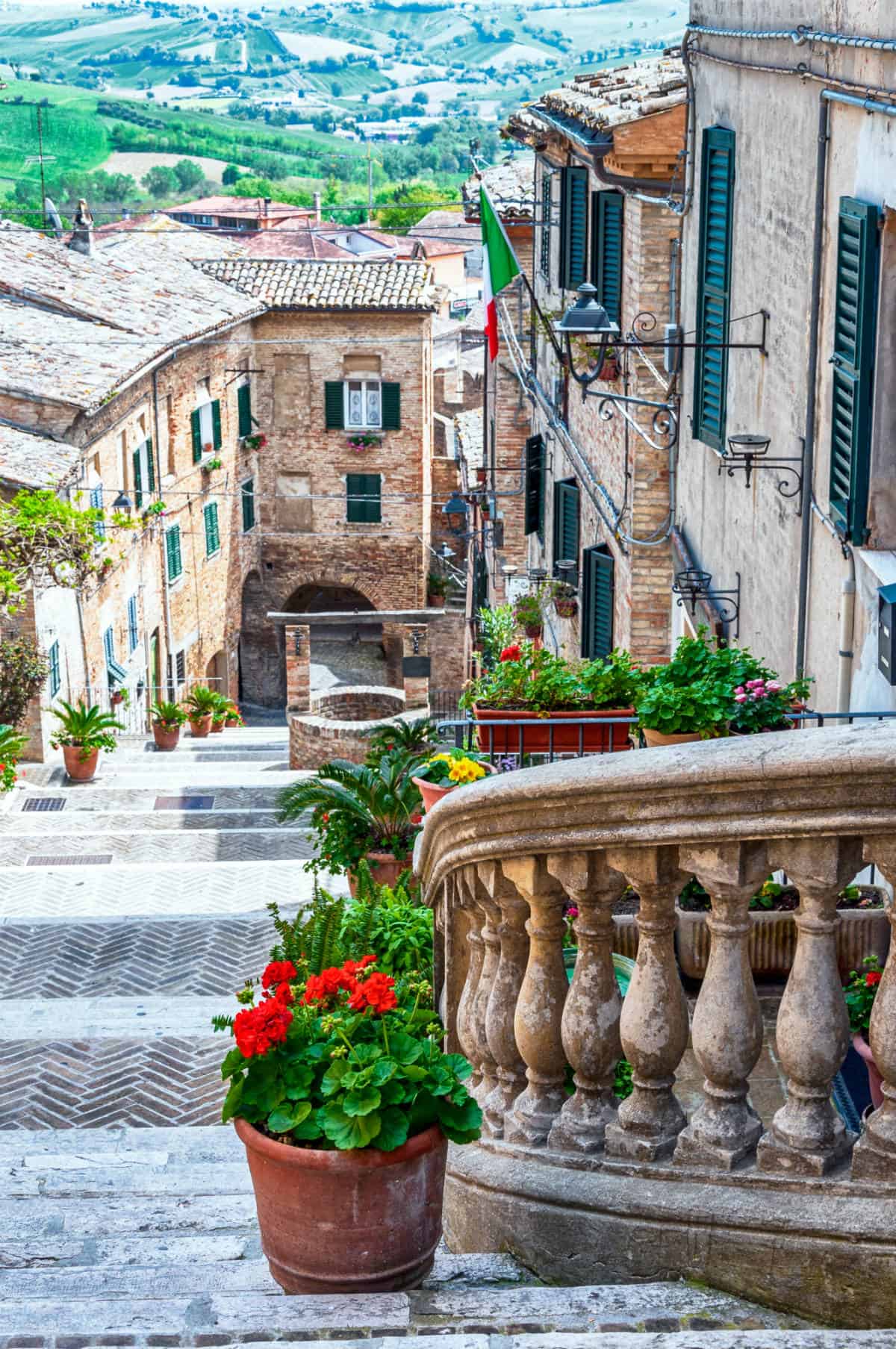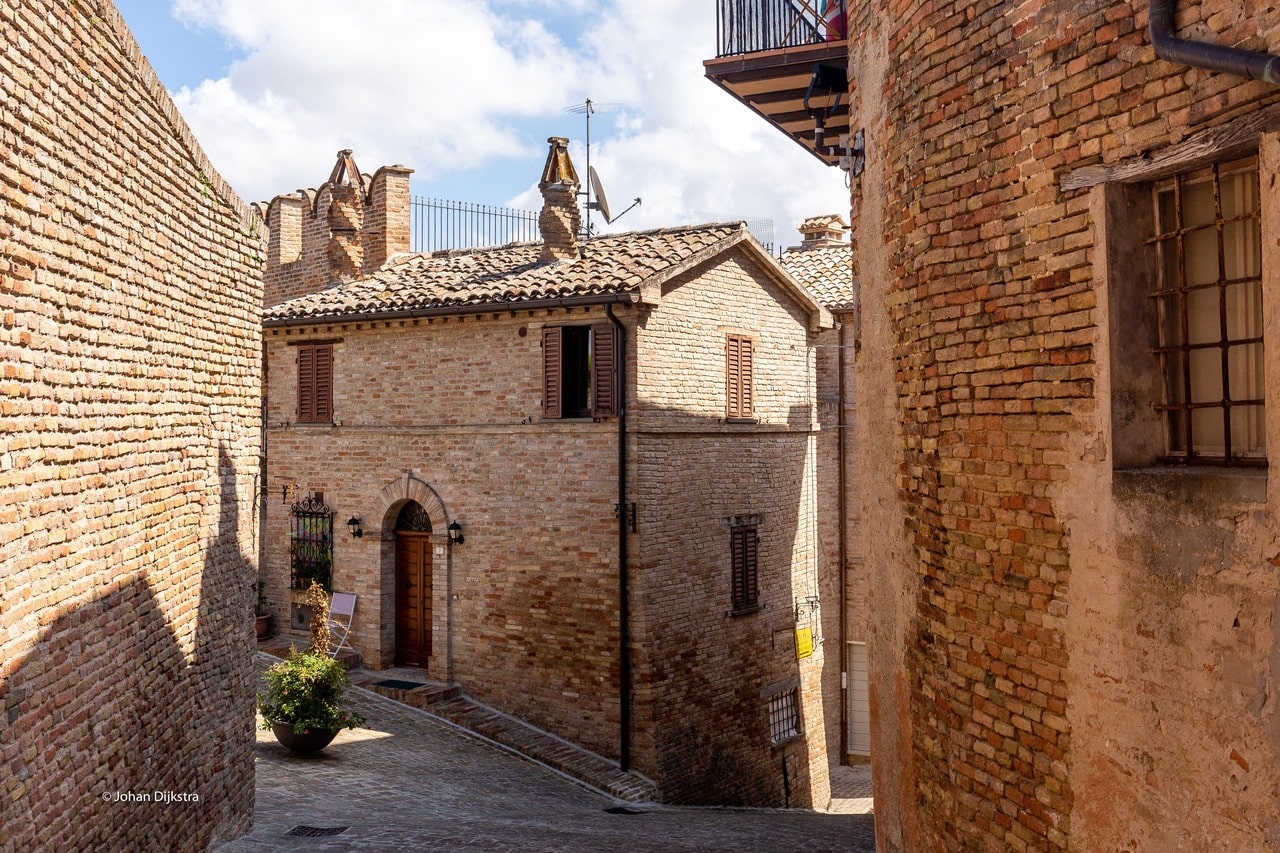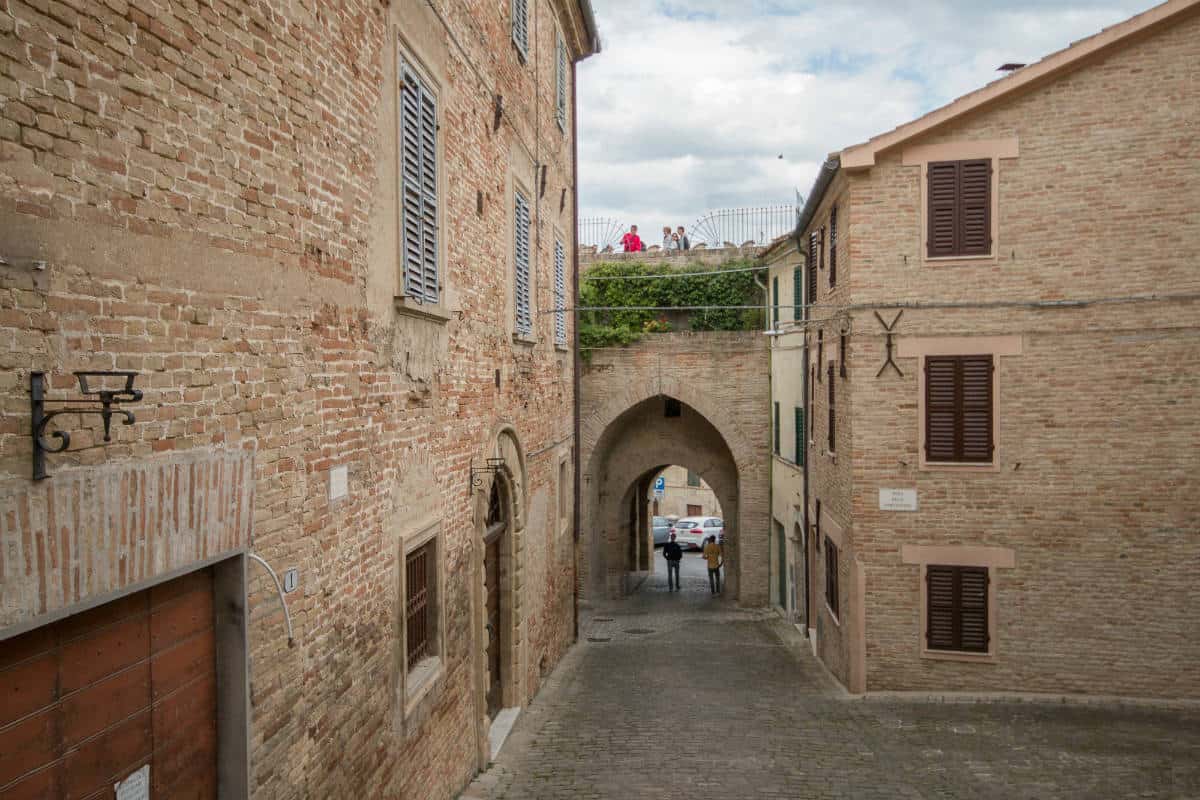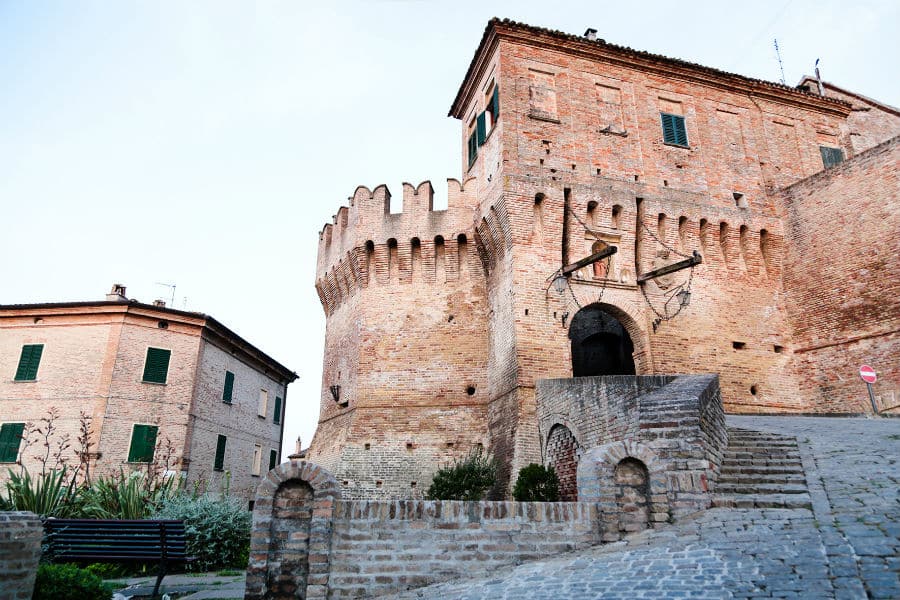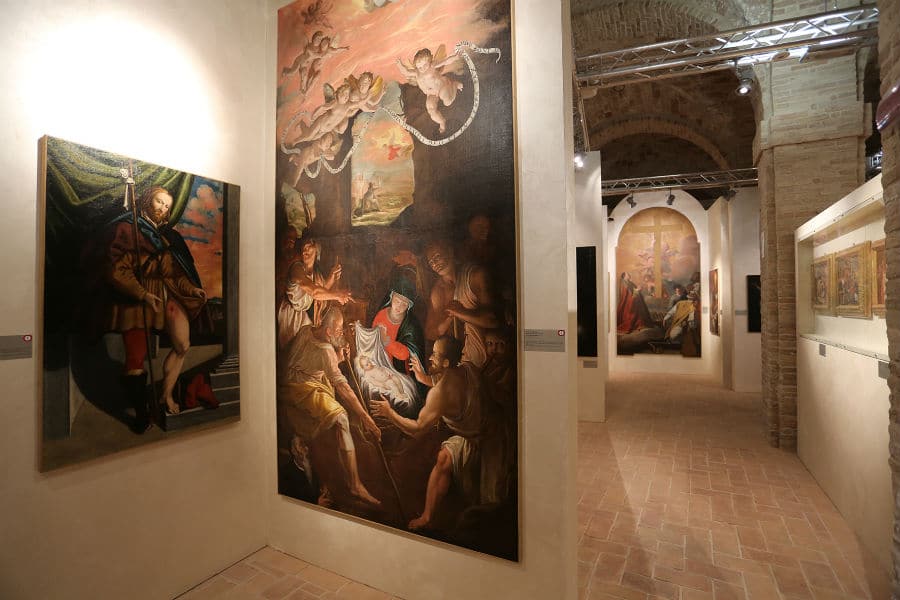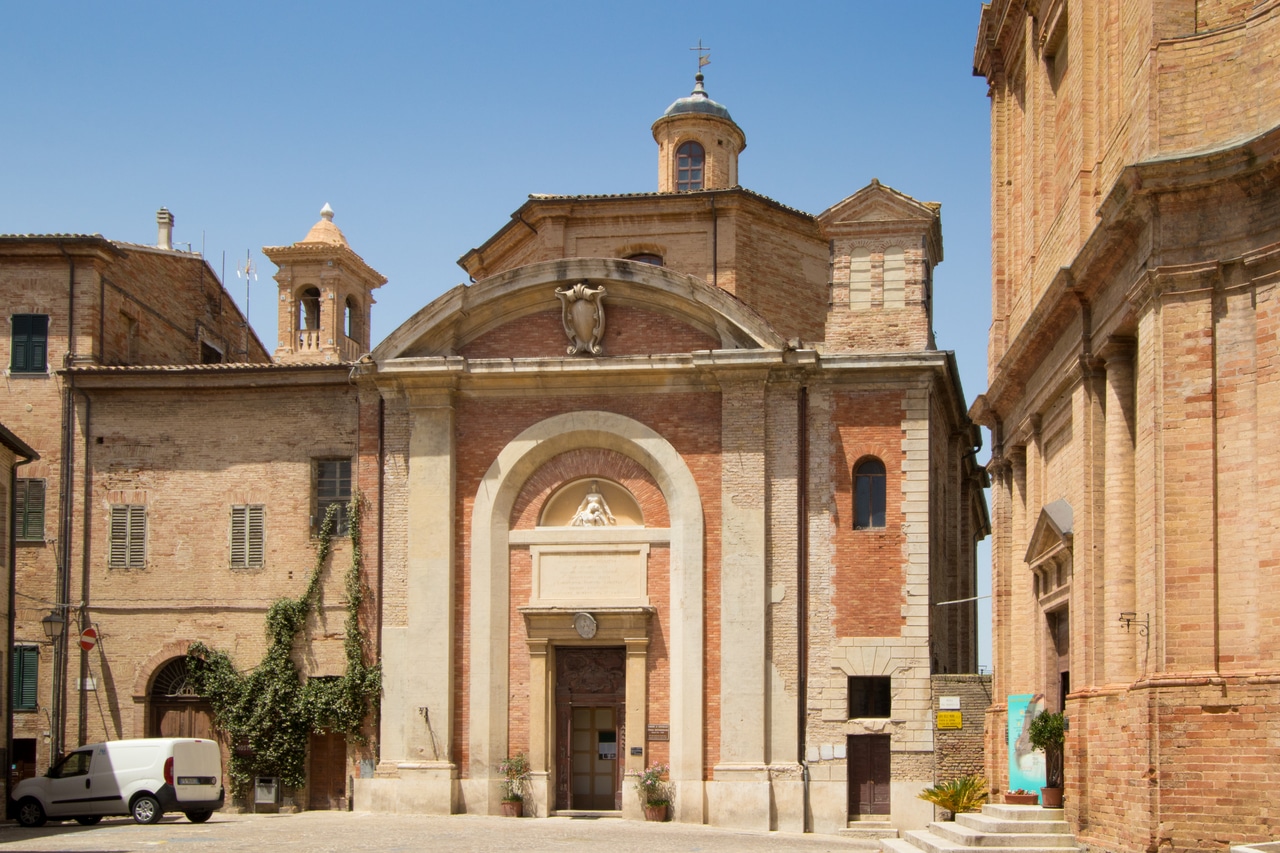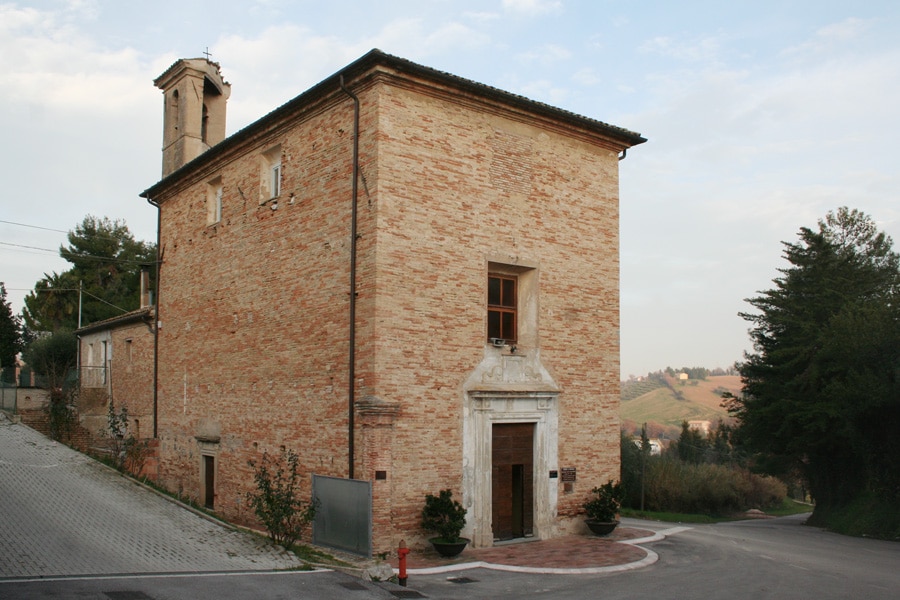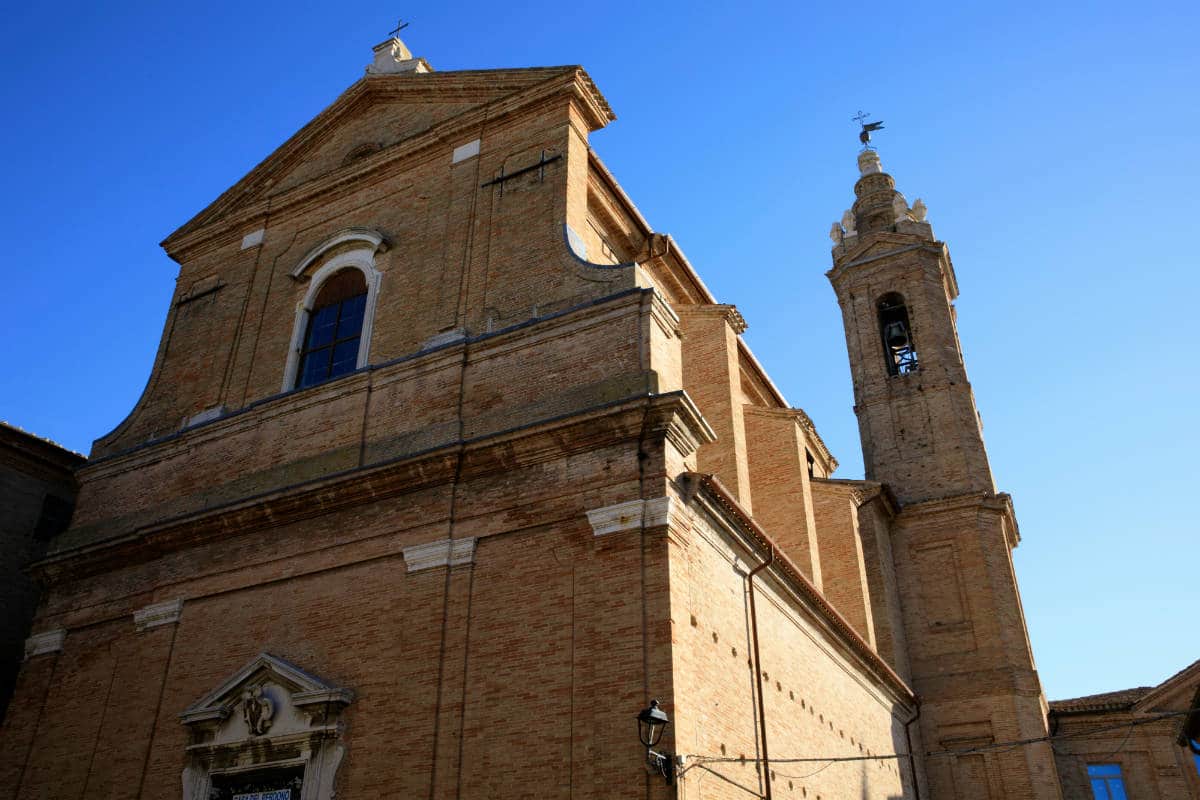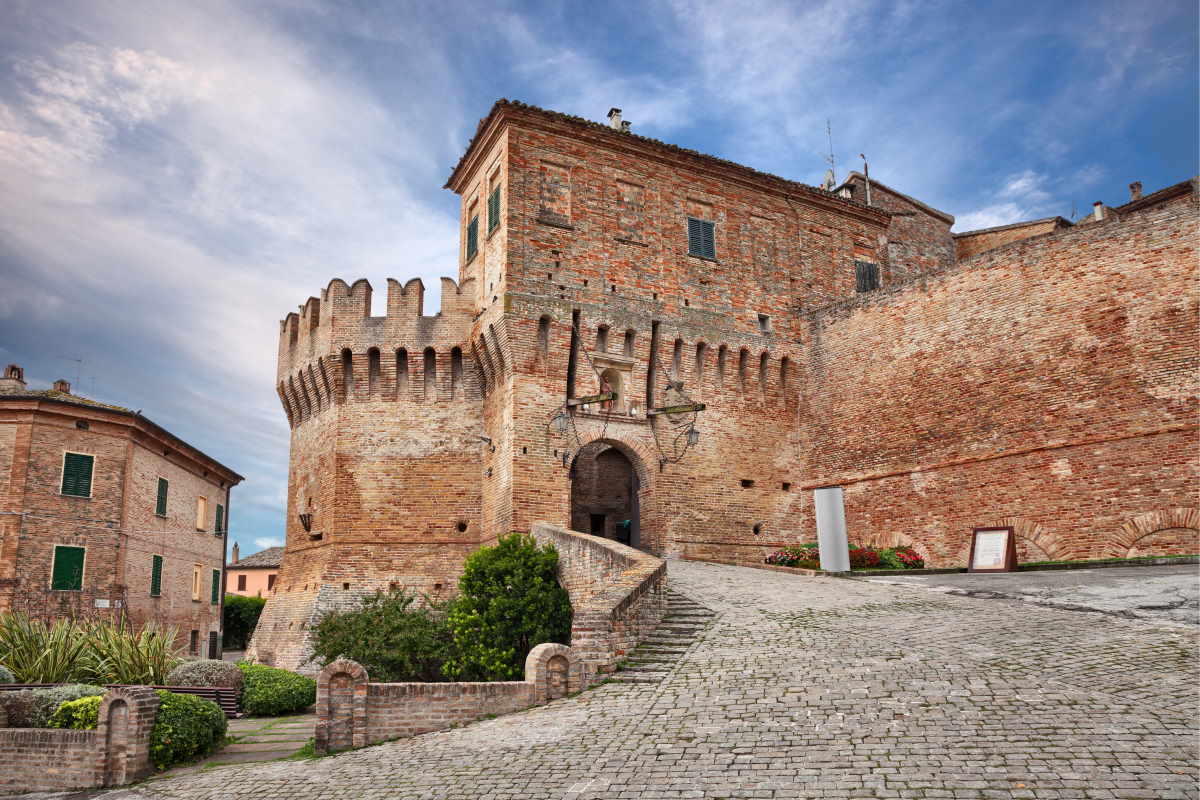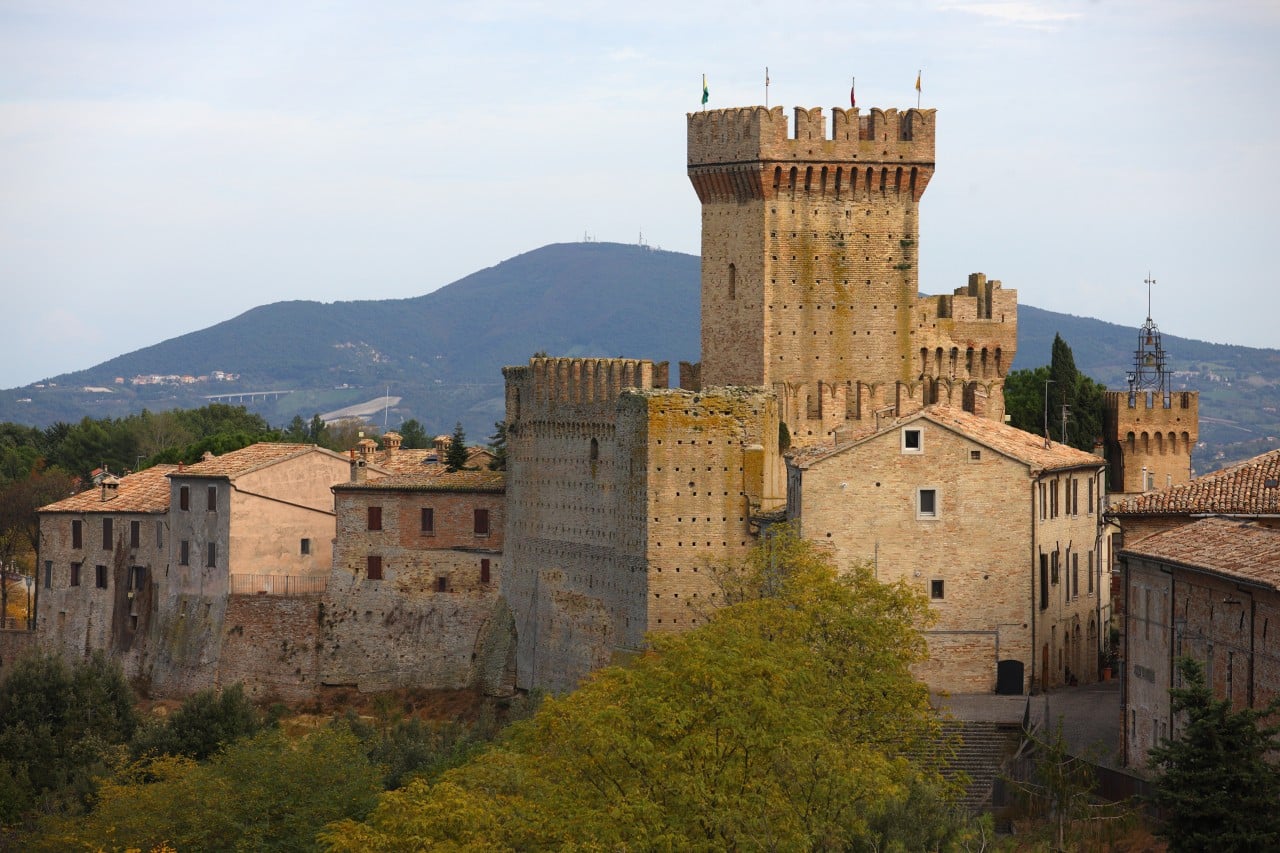The name of Corinaldo (Curinald in Gallo-Piceno dialect) probably derives from "Curia di Rinaldo", ancient Langobard name that the first inhabited centre should have had during the Middle Ages. First of all a renowned wine-producing land (for its famous Verdicchio), it has well-maintained walls that date back to the XIV century. Its walls are recognized as the most intact, imposing, fortified and long (912 uninterrupted meters) of the Marche region and is one of the best preserved of all central Italy. Here Santa Maria Goretti was born.
It rises to the top of a hill on the left bank of the river Nevola. In all probability the city of Corinaldo is sort at the beginning of the second millennium, as a result of the widespread phenomenon of the fortification. Nestled between the rivers Cesano and Misa, between Marca di Ancona and the state of Urbino, it constitutes in a free municipality at the end of the XII century. For its strategic position, soon becomes a scope outpost contested from the neighboring municipalities. After the destruction of 1360, Corinaldo is reconstructed literally ex novo in 1367, following the authorisation granted by Pope Urban V, with the current boundary walls, itemizing fortificativi elements attributed to the genius of the famous military architect the Sienese artist Francesco Di Giorgio Martini. Additional Defense elements are added by the Malatesta family and by Francesco Sforza supplementing the walls with a powerful fortress, that formwork which now traces remain in the Church of the Suffragio.
But the page of history more glorious del Borgo is the one written in 1517, when Corinaldo resists etching of the ousted Duke of Urbino, Francesco Maria Della Rovere. After twenty days of siege the corinaldesi compel the duke to the retreat and the pope of the epoch, Leone X, for the faithfulness shown, elevates Corinaldo to the rank of town. The "Contesa del Pozzo della polenta" is the most ancient historical commemoration of the province of Ancona, recalls this important page in the history of Corinaldo. In the '600 Corinaldo it refines in architectural forms and in costume, enriched with the opera and of the ingeniousness of valuable artists.
See progressively light even monumental religious and civic buildings still visible today and perfectly preserved, which among others the Chiesa del Suffragio the characteristic octagonal plan, erected on the old tower, the church of Our Lady of Sorrows, the Sant'Anna (patron saint of Corinaldo) and the shrine is now dedicated to Santa Maria Goretti, who in this city was born on 16 October 1890.
Around the ancient walls
Corinaldo boasts a historical center very suggestive, whose monument more impressive are without doubt its mighty walls: about one kilometer of fortifications dating back to 1367 and extended to the end of 1400, equipped with doors with ramparts, ramparts, towers, guardiole and window slits, considered to be among the best preserved of the Marches. Starting from the Torre dello Sperone, high well 18 meters, pentagonal shape, it starts to follow the wall circuit turning toward the Gate of San Giovanni. Here there are many elements of defense still visible, as the housings of the beams of the drawbridge, the guns, the window slits and it is possible to climb above the door to admire the panorama.
Along the walls of the Scorticatore goes next to the eponymous tower: both take the name from the craftsman who worked here in 1800. Descend to the port of S. Mary of the market, a splendid example of defense with a double entrance rotated 90°, to then to climb up the tower of the Calcinaro and the Tower of the Roundabout. Here begins the Renaissance addition that amplified the portion of historical center comprised within the walls: through the covered walkway of the Landroni you reach Porta Nova, third and last entrance to the walled circuit.


